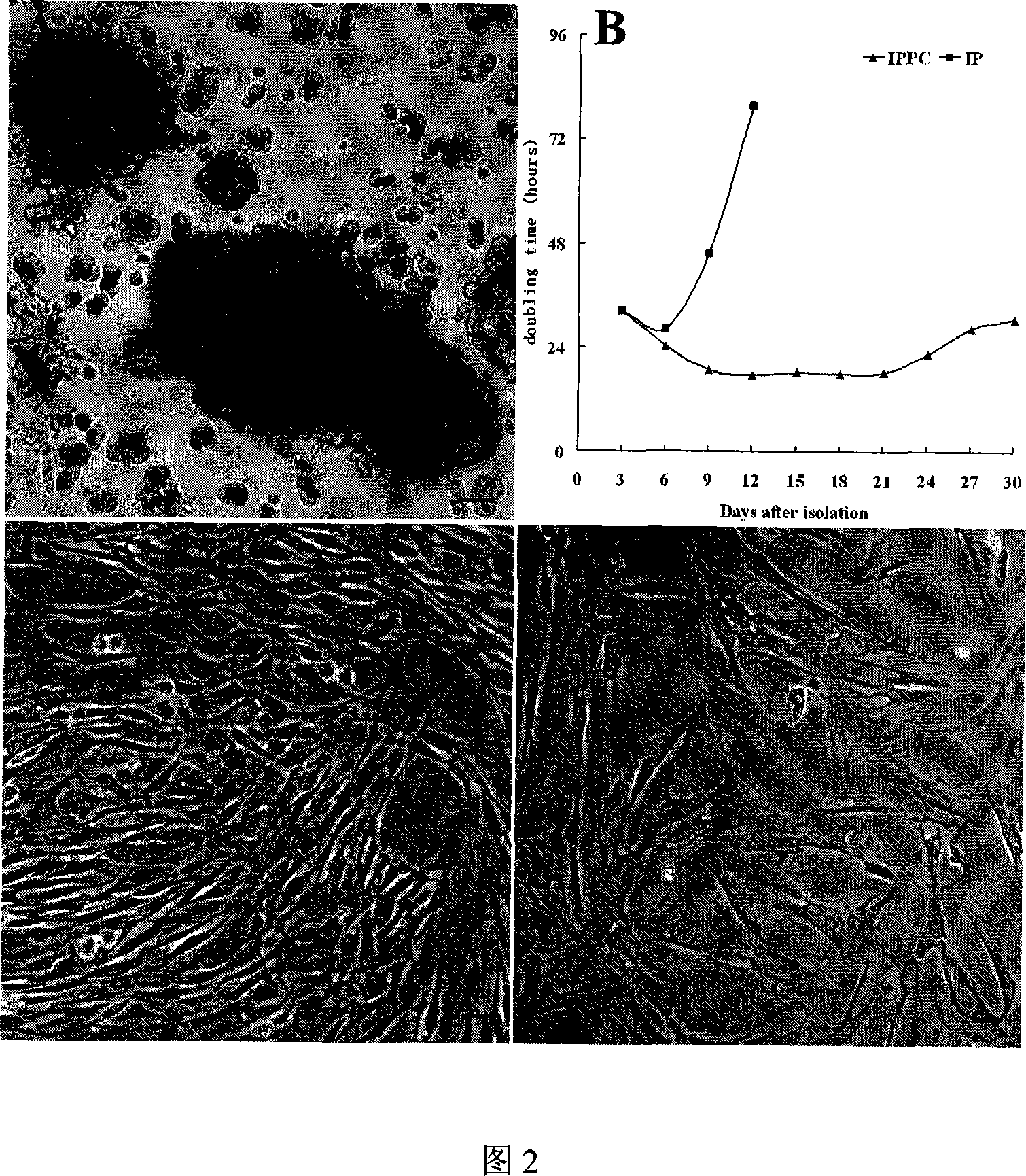In vitro proliferation method for pancreatic islet cell
A technology of islet cell and in vitro proliferation, applied in the field of in vitro culture and proliferation of islet cells, can solve problems such as the effect of beta cell efficiency, safety problems, etc., and achieve obvious effects of promoting proliferation, reducing immunogenicity, and promoting angiogenesis
- Summary
- Abstract
- Description
- Claims
- Application Information
AI Technical Summary
Problems solved by technology
Method used
Image
Examples
Embodiment 1
[0059] Example 1, bFGF stimulates the proliferation of islet cells cultured in vitro
[0060] This experiment is designed to detect whether islet cells cultured in vitro can achieve massive proliferation under the stimulation of bFGF.
[0061] As shown in Figure 2, the proliferation rate of untreated control cells gradually decreased under common in vitro culture conditions, and finally stopped growing about two weeks after isolation. In contrast, islet cells treated with bFGF can maintain an average proliferation rate of about 48 hours for at least one generation, and continue to proliferate for more than two months. In addition, islet cells stimulated by bFGF showed gradual homogenization of morphology while proliferating, that is, they showed a uniform fibroblast-like state.
[0062] This result indicated that bFGF could stimulate the proliferation of islet cells cultured in vitro, and provided a potential cell source for islet transplantation.
Embodiment 2
[0063] Example 2: Gene expression of proliferating islet cells
[0064] This experiment is designed to detect the expression of related genes in the proliferation of islet cells stimulated by bFGF.
[0065] The genes detected in this experiment include islet endocrine hormones: insulin, glucagon and glucocorticoid; pancreatic exocrine enzymes: amylase; islet progenitor marker molecule: Nestin; and islet cell isolation marker molecule: C-myc .
[0066] The time points tested in this experiment included freshly isolated islets, and days 10, 20, and 40 of in vitro culture.
[0067] As shown in Figure 3, the expression of exocrine enzymes disappeared quickly during in vitro culture, while the expression levels of endocrine hormones also gradually weakened at different rates, and the expression of insulin could still be detected at a relatively high level on the 20th day of culture. The expression level.
[0068] At the same time, the increase of Nestin expression can be detecte...
Embodiment 3
[0070] Example 3: Implantation of proliferating pancreatic islet cells can reduce blood sugar in diabetic model animals to normal levels
[0071] This experiment is designed to determine whether bFGF-treated islet cells cultured in vitro can achieve the purpose of treating diabetes by transplanting them into diabetic model rats.
[0072] The source of transplanted cells was islet cells cultured in vitro for 15 days, stimulated by bFGF to proliferate (n=10); and cultured in vitro for 15 days without treatment in vitro cultured islet cells transplanted (n=7) and phosphate buffer to place the operation (n=10) were controls.
[0073] The model animal receiving the transplantation is a diabetic rat model induced by streptozotocin, and the blood glucose is between 300 and 600 mg / dl one day before receiving the transplantation.
[0074] The transplantation route was hepatic portal vein transplantation.
[0075] The blood glucose and body weight levels of the transplanted diabetic m...
PUM
| Property | Measurement | Unit |
|---|---|---|
| thickness | aaaaa | aaaaa |
Abstract
Description
Claims
Application Information
 Login to View More
Login to View More - R&D
- Intellectual Property
- Life Sciences
- Materials
- Tech Scout
- Unparalleled Data Quality
- Higher Quality Content
- 60% Fewer Hallucinations
Browse by: Latest US Patents, China's latest patents, Technical Efficacy Thesaurus, Application Domain, Technology Topic, Popular Technical Reports.
© 2025 PatSnap. All rights reserved.Legal|Privacy policy|Modern Slavery Act Transparency Statement|Sitemap|About US| Contact US: help@patsnap.com



